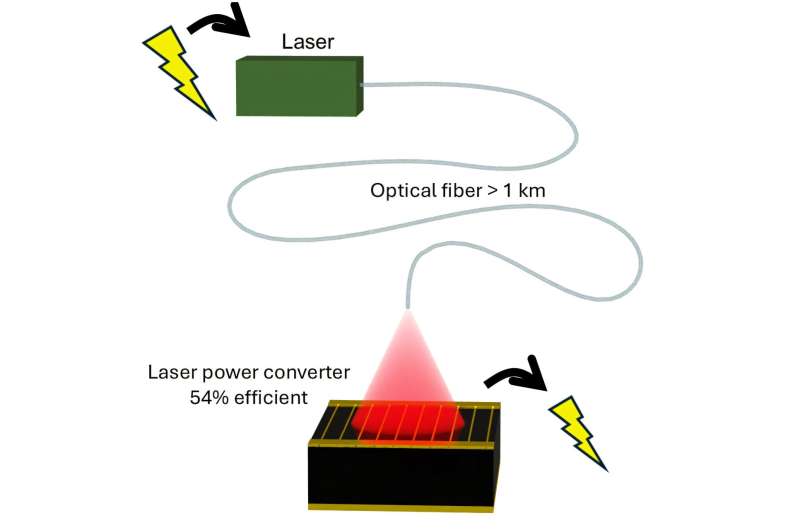Researchers at the University of Ottawa have developed high-efficiency photonic power converters that promise to transform smart grids, IoT networks, and even space communication—ushering in a new era of laser-powered, lightning-proof connectivity.

From smart grids to underwater sensors, our hyper-connected world demands reliable, long-range power and data solutions. University of Ottawa’s SUNLAB, in collaboration with Germany’s Fraunhofer Institute, is making that possible—using just a single strand of optical fiber.
The team has advanced a technology called photonic power conversion—a method that uses laser light sent through fiber optic cables to generate electrical power. This innovation allows devices to be powered and connected over much longer distances, even in harsh environments, without the typical energy losses seen in older systems.
Traditionally, power-over-fiber systems lose a large portion of laser light along the cable. But as Prof. Karin Hinzer of SUNLAB explains, “With these new multi-junction converters, the fiber can be significantly longer, enabling broader deployments.” These converters are designed with stacked semiconductor layers, allowing them to absorb more light and generate higher voltages with impressive efficiency.
The SUNLAB team created a simulation model tailored to telecom-grade infrared wavelengths—ideal because of their minimal loss in optical fiber. The fabricated device achieved over 2 volts output with a conversion efficiency exceeding 53%, a major leap over traditional systems. Gavin Forcade, lead author of the study published in Cell Reports Physical Science, highlighted that this development now makes it viable to transmit both power and data beyond one kilometer, a threshold where earlier systems would fail.
The impact is wide-reaching.
These converters can now power:
- Remote sensors in smart grids and wind turbines
- Spark-proof fuel gauges in aircraft
- IoT devices and video cameras in inaccessible areas
- Underwater and even free-space applications for drones and satellites
Because the system uses existing fiber optic infrastructure, adoption can be cost-effective and immediate. Prof. Hinzer sums it up: “We can now transmit both power and data safely and efficiently—even to the most remote or dangerous locations—without laying down new power lines.”







